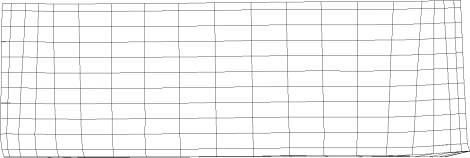 |
In order to evaluate the effect of the stiffness of the supporting foundation on the dynamic response of unanchored tanks, the tank base plate was considered supported on a tensionless elastic foundation of a uniform stiffness of 100 lb/in/in2in compression. Table (5.6) shows the unanchored tank response using the small deflection theory. The dominant period of the rocking mode of the tall tank increased to 1.16 sec while the one for the broad tank showed almost no change. This is attributed to the fact that the portion of the base plate of the broad tank located in the middle of the tank remains inactive in a horizontal position during the earthquake, as shown in Figure (5.25). The portion near the edges is frequently penetrating into the foundation and uplifting above it. Because of high foundation stiffness, the penetration displacement is small as compared to the uplift displacement. As a result, the resistance of the base plate to the uplifting force becomes the governing factor in the rocking motion of the tank. On the other hand, as shown in Figure (5.26), most of the base plate of the tall tank showed rocking motion. Thus, the period of the tank increased due to the decrease in the rotational stiffness of the base plate. This results in hydrodynamic forces which are lower than those exerted when the tank was supported on a stiffer foundation. In addition, increasing the foundation flexibility caused the contact zone to be larger and pressure distribution on the foundation was more uniform than those of stiffer foundations. As a result, the compressive stresses in the bottom of the tank shell were lower, because they were distributed more widely along the base of tank wall, and the uplift displacements were higher than those of tanks supported over more rigid foundations.